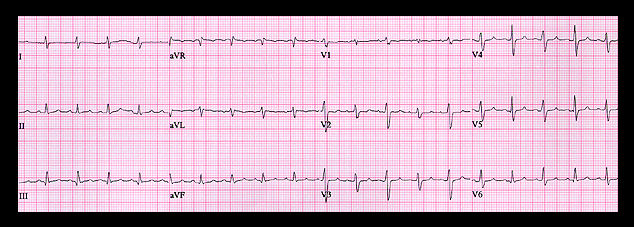
This ECG is from a 57 year old male with carcinoma of the lung. He presented to the Emergency Department complaining of shortness of breath. The pertinent physical findings were a fall in blood pressure with inspiration from 150/90 to 126/60, distended neck veins and muffled heart sounds. What is the most obvious ECG abnormality and what does it imply?
